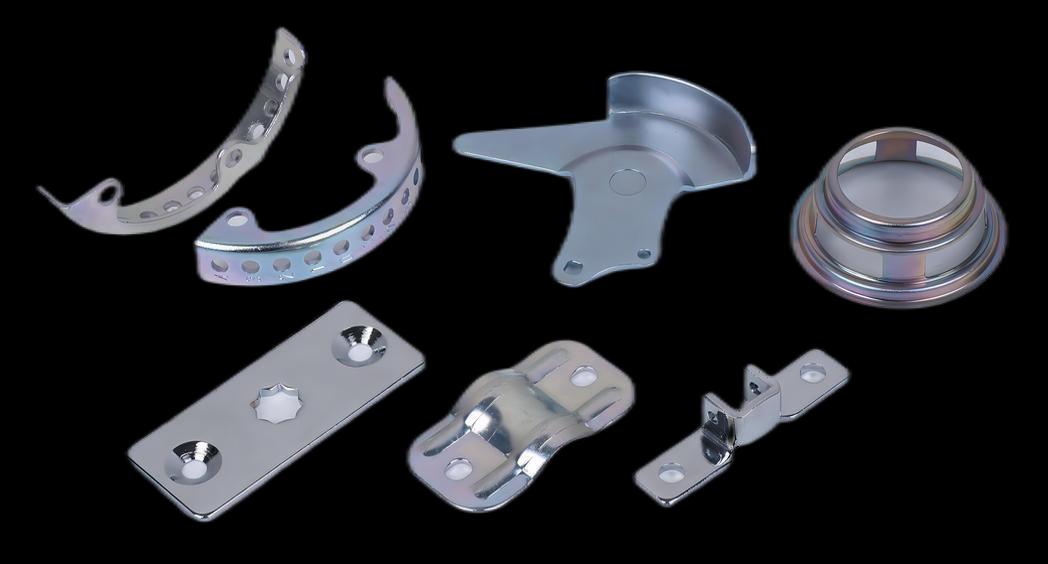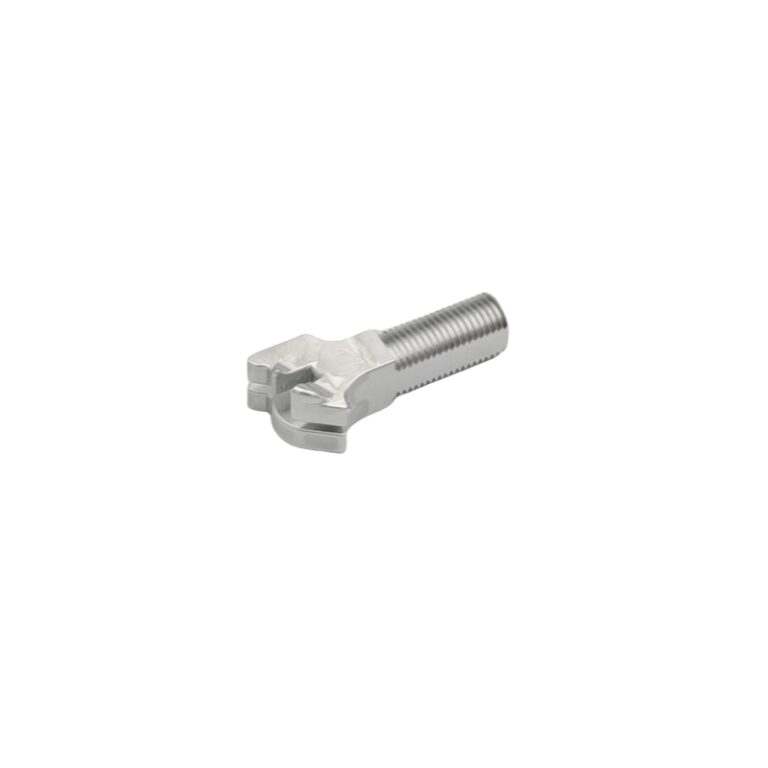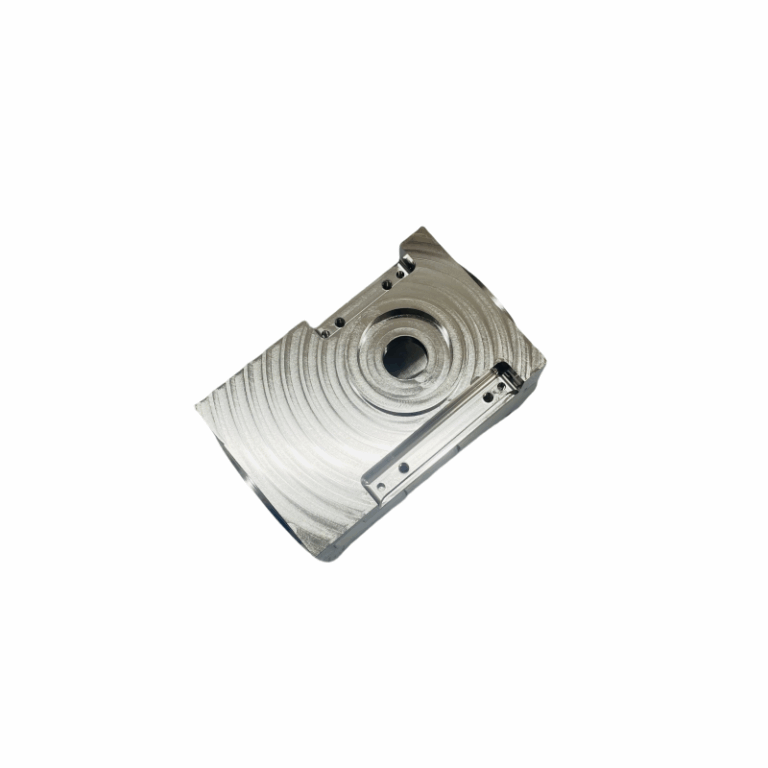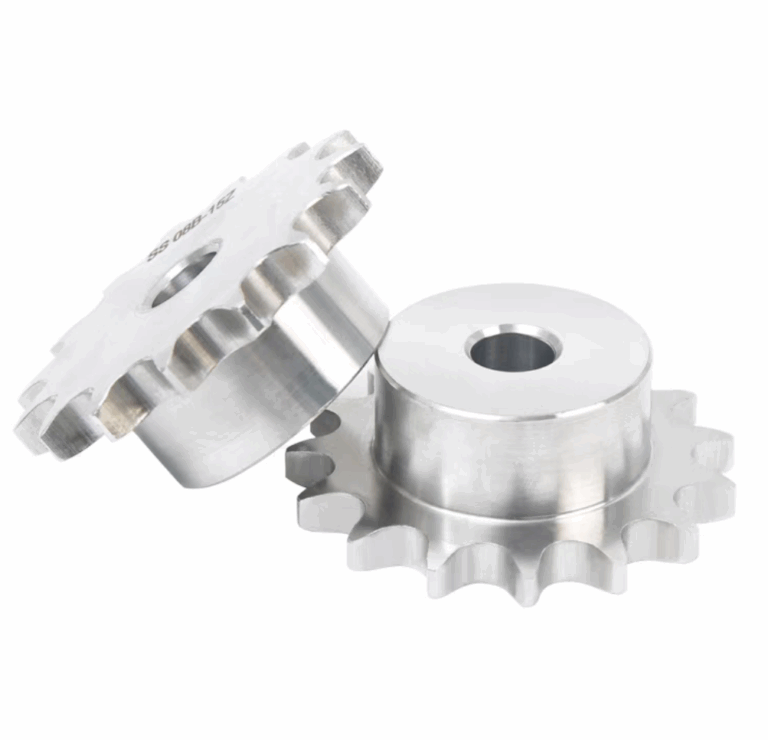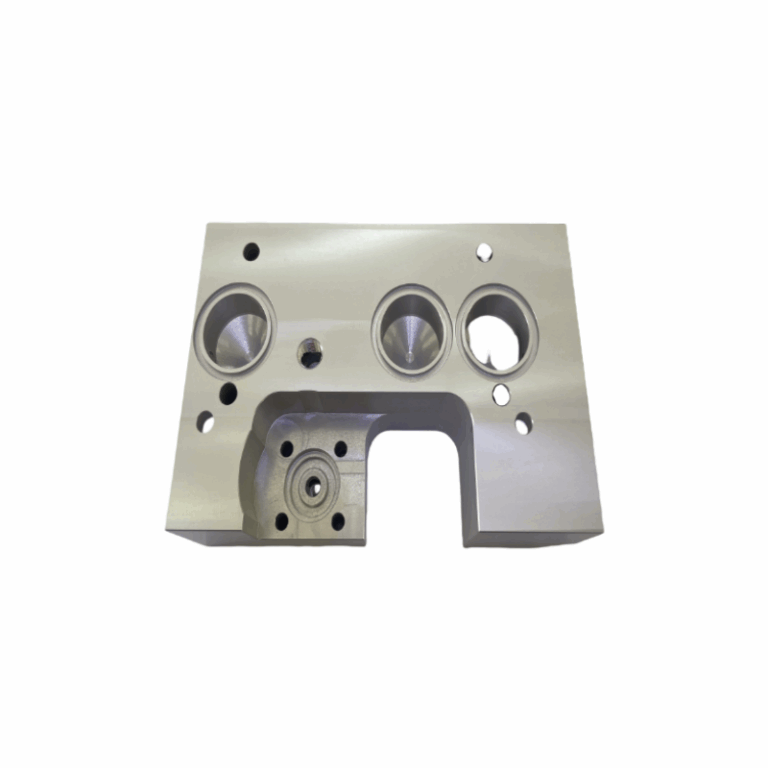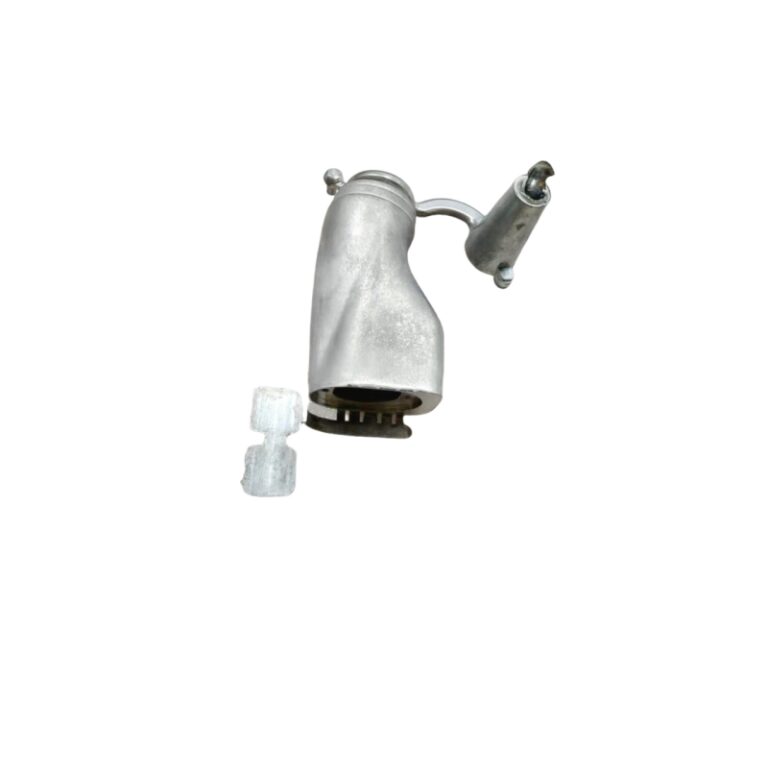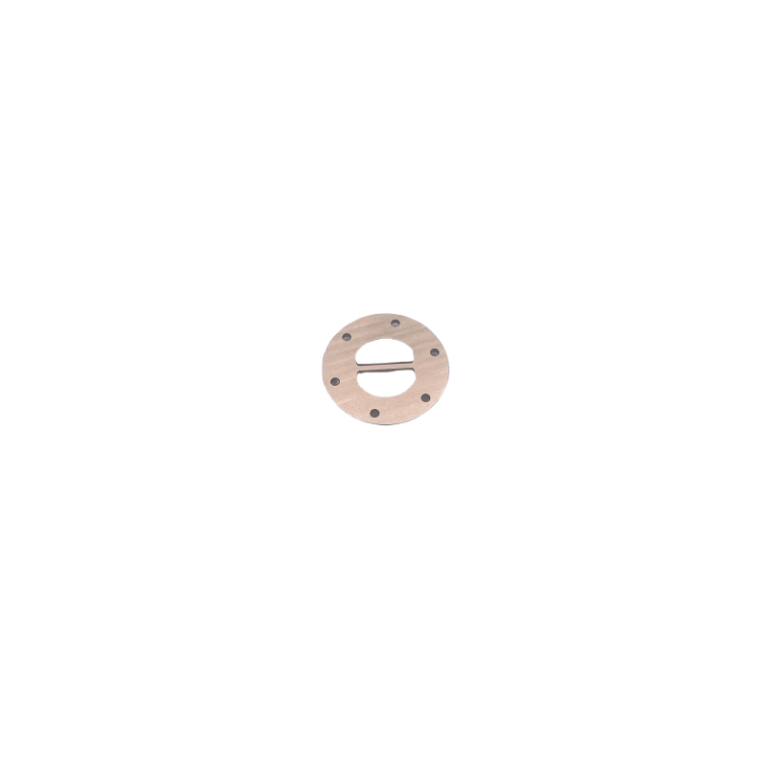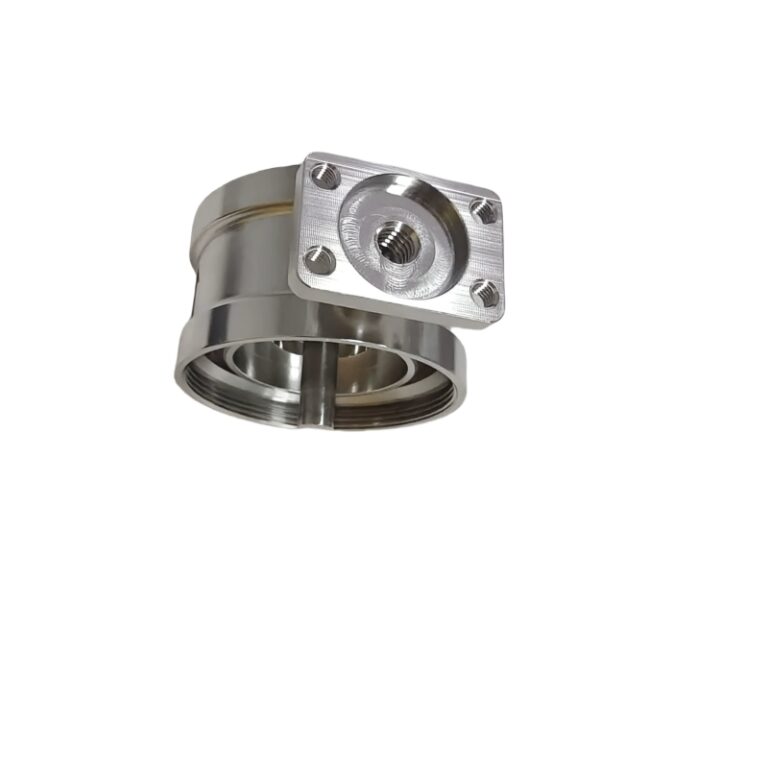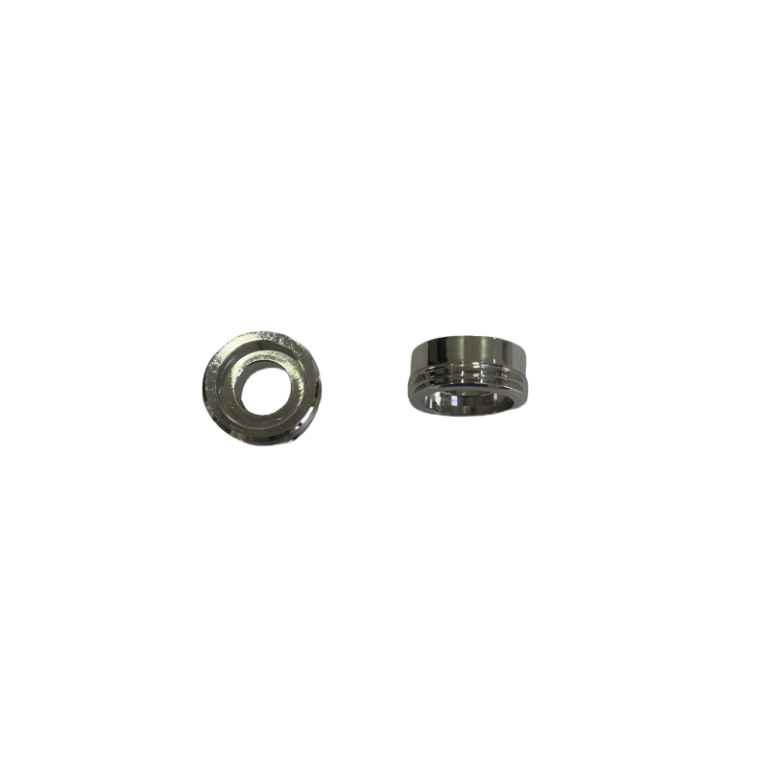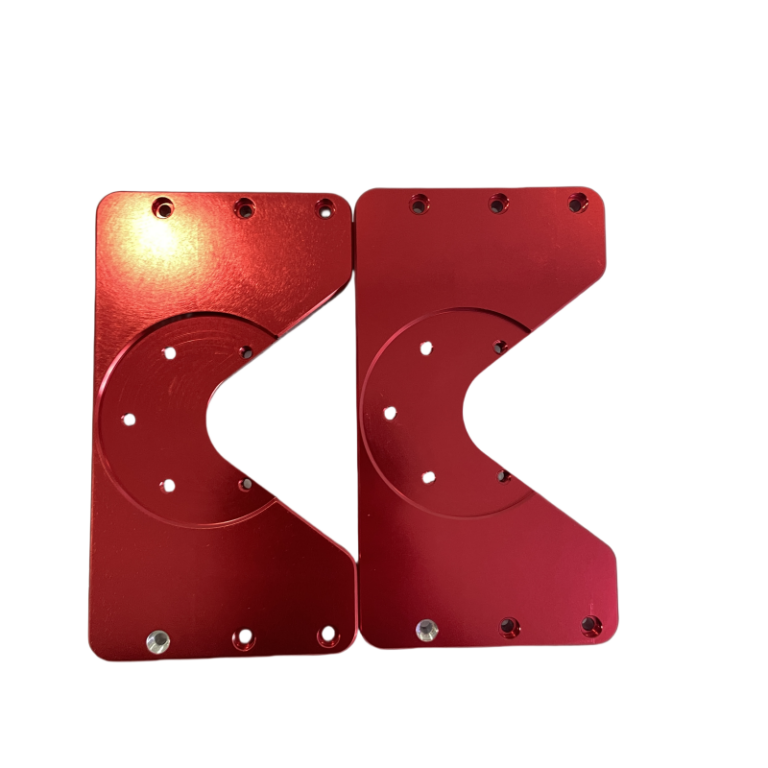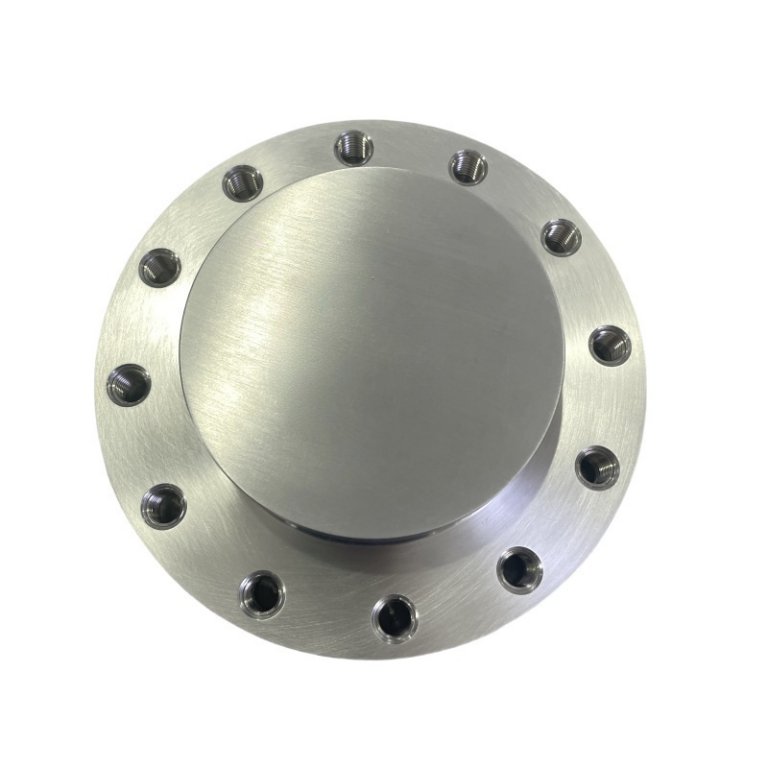Custom metal stamping is a complex operation that combines presses and dies to form sheet metal into a specific shape. Using different metal forming processes, metal stamping parts manufacturers can create parts with complex geometries and tight tolerances. The press, stamping die, and punch are three important components in the stamping process. A specific metal stamping part requires a particular die, installed in the press and then fed with metal to form the shape. Depending on the complexity of the part, manufacturing each component may require many steps, including punching, blanking, embossing, flanging, and bending.
Types of Metal Stamping Processes:
According to the standard of stamping, metal stamping parts manufacturers have four processes: progressive die, four-slide, deep drawing, and transfer die stamping. (Learn About The Special Process Of Metal Sheet Pressing)
Progressive die stamping
Progressive stamping involves applying a series of different dies in one material feed. The sheet metal is fed into the different dies one by one, such as punching or cutting, until the final product is created. Because different stamping processes can be performed simultaneously in one process, metal stamping parts manufacturers can produce complex parts with a variety of features, such as holes, slots, and bends, at one time.
Four slide stamping
The four-slide stamping process is when a piece of metal is punched, bent, and formed in a single operation. It is performed on a specialized machine called a “four-slide or multi-slide press.” The equipment consists of four adjustable slides that are used to perform different operations. The workpiece is fed into the machine and moved between the slides, which are used in turn for the stamping operation. It can be reconfigured to produce parts with different shapes and features easily. The process is ideal for small to medium-volume production and is often used to produce small, complex parts with tight tolerances
Drawing
The drawing stamping process involves pressing a metal sheet into a die by punching. The punch forces the metal to flow and form deep or complex parts, like the shape of a dice. Draw stamping begins by clamping the material sheet into a holder. As the punch is lowered into the die, it pushes the material sheet into the die, forcing the metal to flow and conform to the shape of the die. The process is suitable for making deep or complex geometries with uniform thickness, such as cans, cups, and containers.
Transfer Die Stamping
The transfer die stamping process uses a variety of tools as the part is subtracted from the metal strip and freely transferred. It has three working structures that allow the part to move freely and can be turned or rotated at different angles to form the workpiece at each station until it is completed. The transfer die stamping process has automation features that simplify the operation into a single process that can handle different procedures such as cutouts, holes, and threaded mechanisms. This custom metal stamping eliminates secondary operations and reduces the overall budget of the project.
Custom Metal Stamping Technologies:
Bending: The bending process is easy to understand. The sheet is inserted into a specific die and pressed with a punch or a bending machine to produce the desired bending angle through deformation.
Blanking: The process of blanking excess material from the original metal strip is called blanking. It is a crucial process where the sheet is punched to remove the excess metal, thus creating a shape.
Punching: Metal stamping parts manufacturer uses the punching process to create small holes, slots, or cuts. The punching die holds the workpiece and the punch is lowered into the die to cut or punch a hole in the metal sheet.
Drawing: Drawing is another type of metal stamping that involves pulling a metal sheet through a die to create a specific shape or form. It is performed using a drawing press, which uses a powerful punch to apply tension to the metal sheet.
Knurling: Knurling is the process of creating a raised surface on a metal sheet using a punch and die. The punch contains a negative image of the desired shape, which is then pressed into the metal sheet, leaving a raised or depressed image on the surface.
Embossing: The workpiece is pushed into a die to form a precise shape, and the final shape is irreversible. During the embossing process, the metal part is struck with great force, eliminating burrs and ensuring the toughness of the metal. In addition, embossing is used to form pitting and protruding patterns on the sheet by metal stamping parts manufacturers.
All of these metal stamping operations are popular due to low cost, fast production, complex shapes, and high precision. Stamping can provide tolerances ranging from ±0.125 mm to ±1.5 mm.
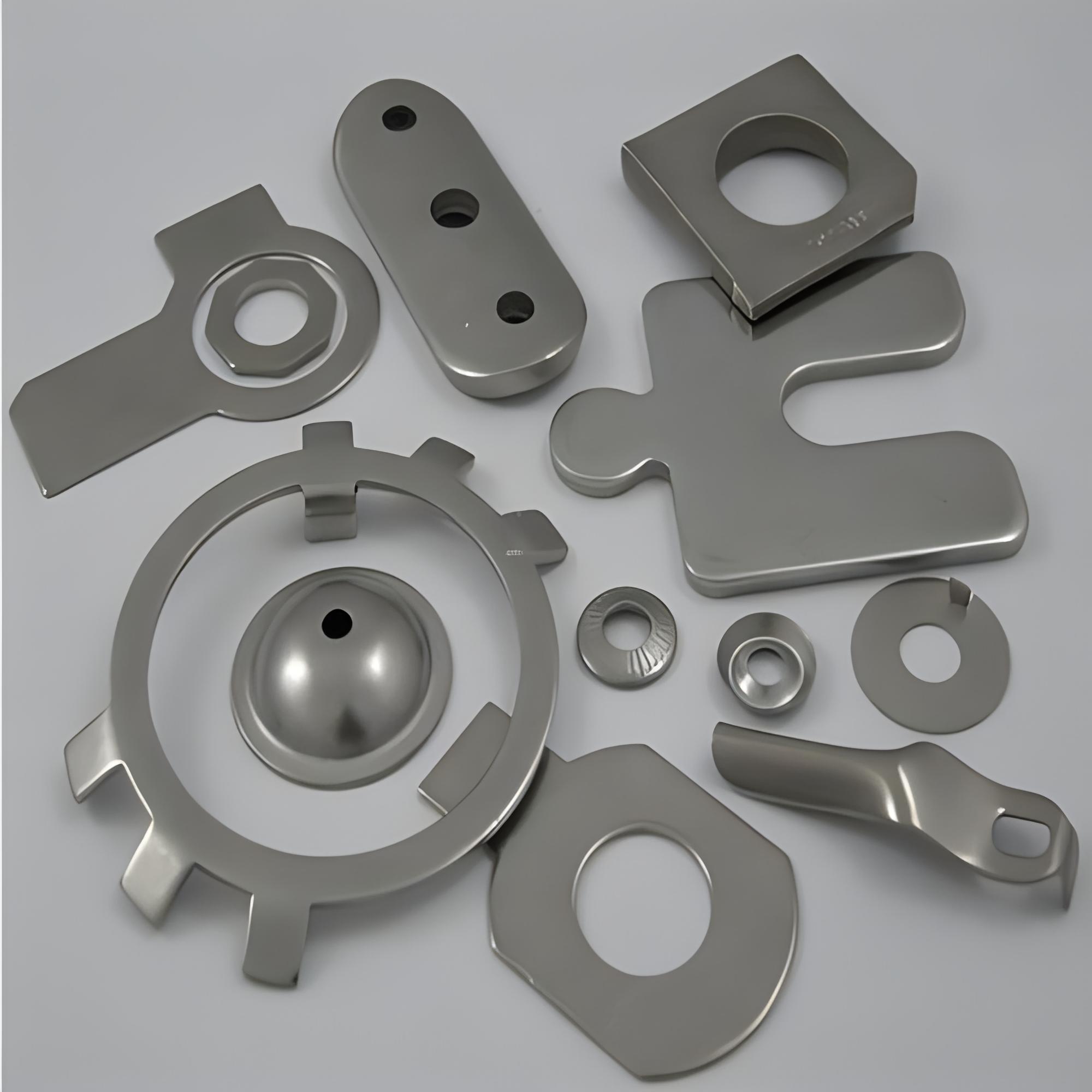
The application of stamping technology
From our daily utensils and kitchenware to advanced aerospace parts, stamping parts are everywhere. It is a fast and simple process for metal stamping parts manufacturers, low cost and accuracy make it suitable for different automotive, aerospace, and electronic applications.
Automotive Industry
The automotive industry plays an important role in the development of stamping technology. Originally developed to manufacture various automotive parts, now it is in the stage of automation and computer control. Metal stamping parts manufacturers in automobiles that use stamping technology manufacture many parts including body panels, engine parts, transmission parts, suspension components, interior trim, etc.
Electronics Industry
Metal stamping parts manufacturers always use these processes to manufacture connectors, switches, housings, relays, transformer cores, etc.
Aerospace Industry
Stamping processes produce a wide range of aerospace components such as fuselage parts, engine components, wheels, brakes, seats, cabin walls, and fluid system components.
Home Appliances:
Such as washing machine drums, refrigerator door linings, oven racks, microwave plates, blender blades, coffee machine filters, and lots of home appliance parts made by stamping technology from metal stamping parts manufacturers.
Military and Defense: Armor plates, helmets, magazines, triggers, antennas, connectors, navigation systems, and targeting systems.
Medical Industry: Surgical blades, tweezers, pacemakers, artificial joints, medical tubing, braces, splints, crowns, medical sensors, microscopes, centrifuges, stethoscopes, artificial heart valves, artificial tendons, and more.
Metal stamping is a common cold-forming technique in sheet metal processing that uses pressure and a die of the desired shape to convert a metal coil or sheet into the desired geometry. The metal stamping parts manufacturer can mass produce metal parts with excellent repeatability and the parts can be used in various industries such as automotive, electronics, aerospace, and telecommunications.
Designing and manufacturing the right die is essential to making accurate stamping parts. DMTC has all the expertise related to stamping services. We have experienced engineers to design the dies and automatic presses to perform a variety of custom metal stamping processes. If you need any stamping services, request a quote and we will respond with all the details within 24 hours.

